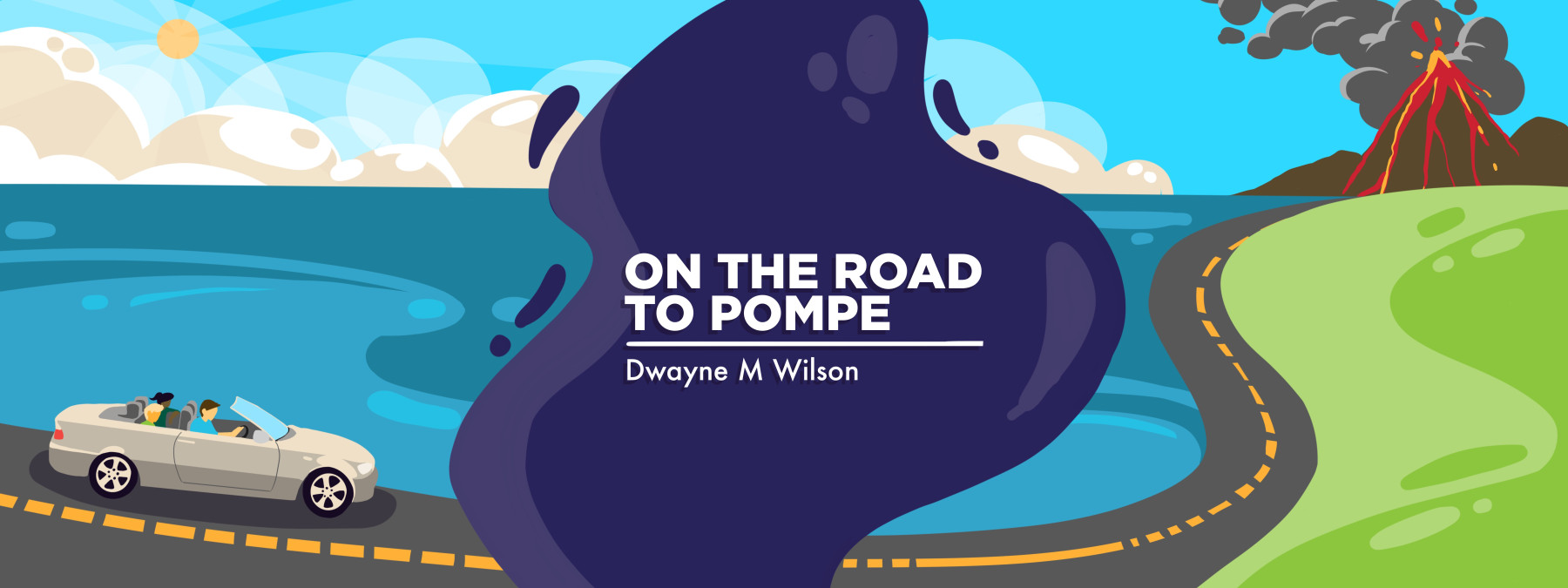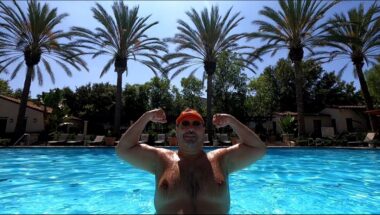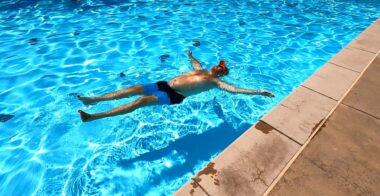Among the benefits of aquatic therapy are pool days in paradise
In managing Pompe disease, a columnist tries to think outside the box
Written by |

A couple months ago, I shared with readers about a new technology I was trying out for physical therapy, a powered exoskeleton suit called HAL — for Hybrid Assistive Limb — designed by the company Cyberdyne. It’s used by the RISE Healthcare Group, of which SoCal Elite Physical Therapy, where I receive therapy, is a part. The goal is to work on my weakened leg muscles, due to Pompe disease, and stimulate my brain-muscle movement connection.
I had scheduled those appointments once a week, usually on a Monday. To date, I’ve completed six exercise sessions. But with summer vacation, traveling, and work meetings, I missed a few weeks of HAL therapy in the middle of it.
My physical therapist suggested I do regular physical therapy appointments alongside HAL. This led me to schedule regular appointments at SoCal Elite Physical Therapy’s office in Irvine, California, and HAL sessions in Tustin. The Irvine appointments are usually on Thursdays or Fridays. Along with my full-time job, all of this has kept me pretty busy during the summer.
Because I must manage Pompe disease on a daily basis, I try to think of other ways to have fun and activate my muscles. I like to look at it as thinking outside the box, which means being creative and doing something that’s not mainstream.

Dwayne Wilson works out in the pool on a hot day. (Courtesy of Dwayne Wilson)
Hitting the pool
One idea is to do my own exercise routine in the swimming pool. Aquatic therapy uses buoyancy while one is in the water and the displacement of body mass to create less resistance while walking and exercising. I like to do it on the weekends at a local pool here in our semitropical oasis that is California. When I have no HAL appointments during a given week, I plan to make it to the pool for some extra time in the water. I want to make sure that I’m always moving forward.
Most of the time, I don’t even think of it as exercise. It’s just time hanging out in the pool on a hot day. It’s much more relaxing to exercise while looking at palm trees or birds of paradise than being in a hot gym.
My first go-to exercise in the pool is walking, which I can usually do for about 20 minutes. It’s much easier for me to do in the pool than on land, and if I fall, no harm is done.
Next, I grab on to the side of the pool and do knee raises, holding my knee up for 30 seconds. I do that about 10 times with each leg.
Then I do 10 squats, which is impossible for me to do outside the water. In the water, I feel like a professional weightlifter.
One of the serious symptoms I had that led my neurologist to suspect Pompe disease was having a hard time breathing in the pool when water was up to my neck. It felt like someone was stepping on my chest. Today, because I’ve received treatment, I don’t feel as much pressure while I’m in the water. I can relax while standing in the deep end and practice my breathing.
Doing all of these exercises is just another way I manage Pompe disease. There are days when I don’t feel like going to physical therapy. I don’t want to exercise or work out. Sometimes I don’t even want to take walks because my back feels stiff and my legs ache. But thinking outside the box has kept me motivated.
I’m having fun and fostering a positive mindset while exercising. And that makes every move count “On the Road to Pompe.”

Floating in a pool is a good way to practice breathing exercises. (Courtesy of Dwayne Wilson)
Note: Pompe Disease News is strictly a news and information website about the disease. It does not provide medical advice, diagnosis, or treatment. This content is not intended to be a substitute for professional medical advice, diagnosis, or treatment. Always seek the advice of your physician or other qualified health provider with any questions you may have regarding a medical condition. Never disregard professional medical advice or delay in seeking it because of something you have read on this website. The opinions expressed in this column are not those of Pompe Disease News or its parent company, Bionews, and are intended to spark discussion about issues pertaining to Pompe disease.







Leave a comment
Fill in the required fields to post. Your email address will not be published.